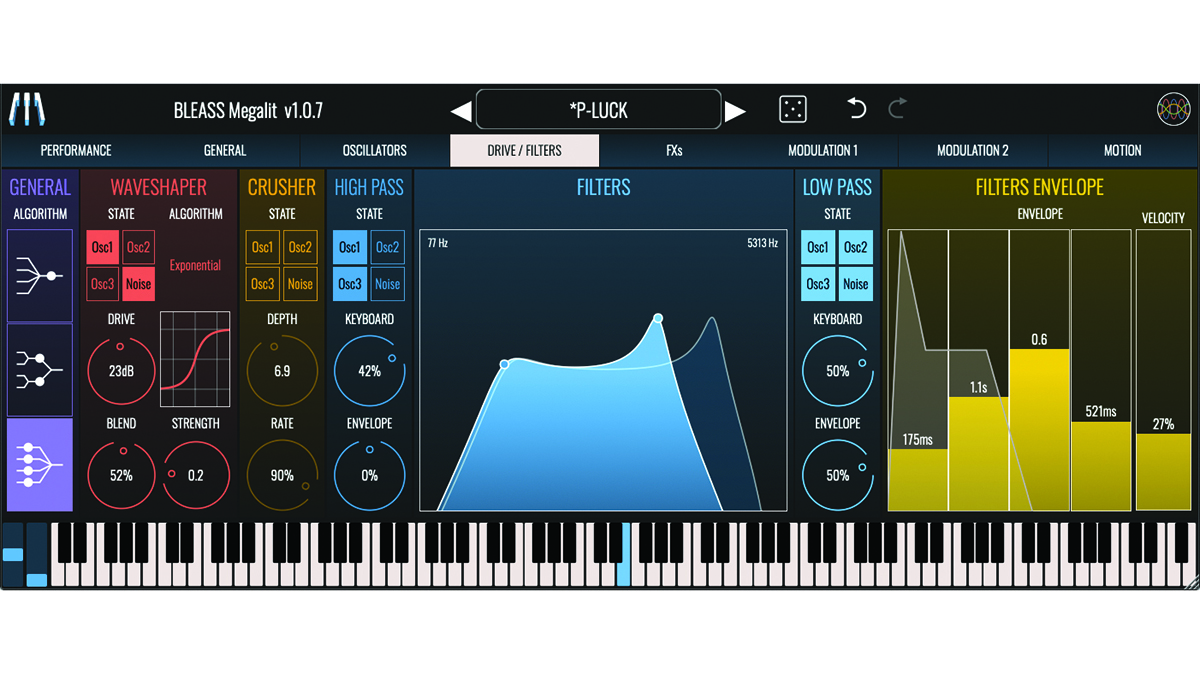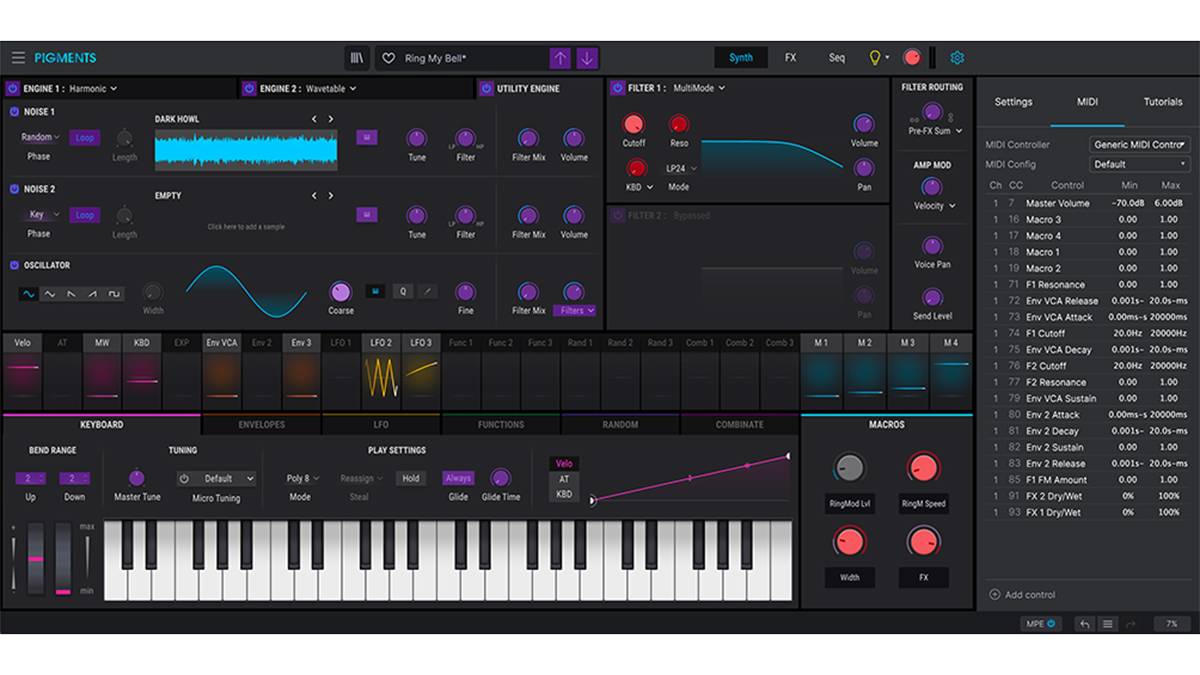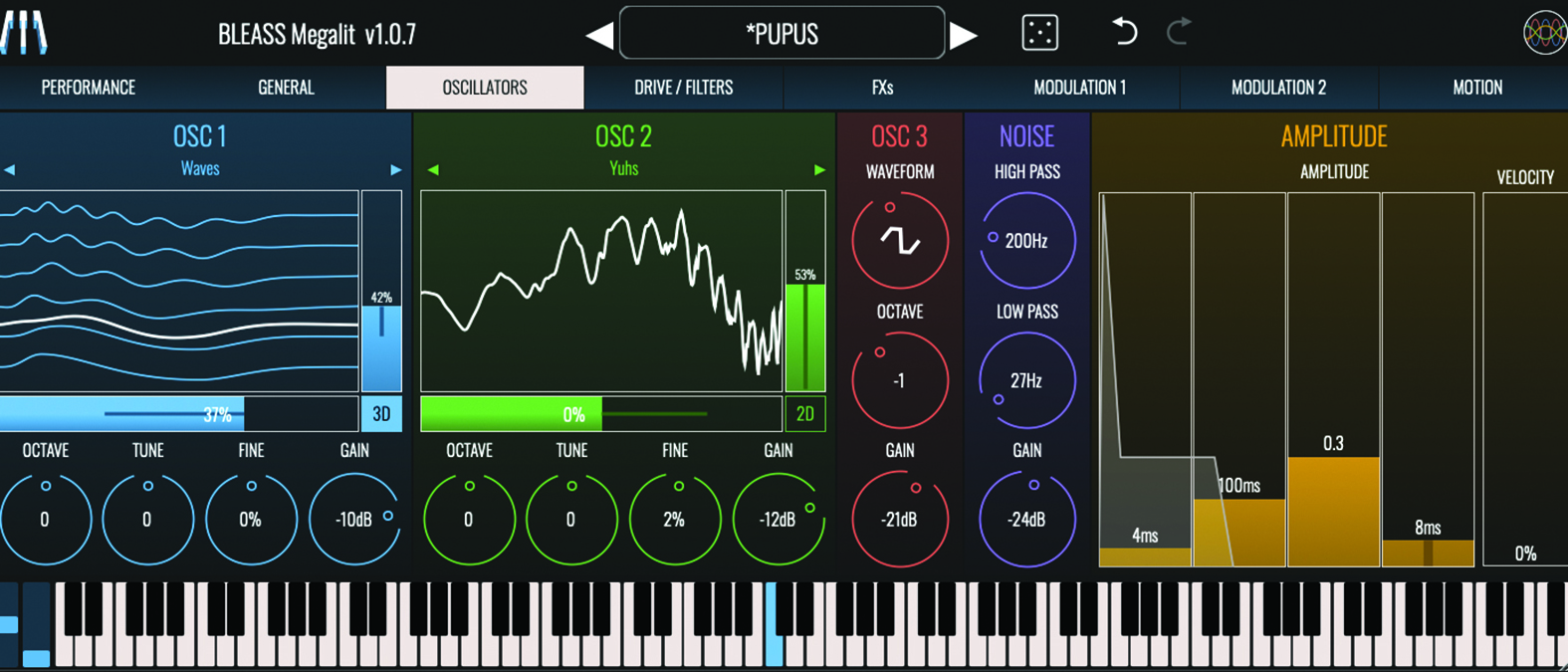MusicRadar Verdict
Megalit’s impressive sound quality, flexible engine and varied voice are made all-the-more compelling by how easy and fun the synth is to work with.
Pros
- +
Super-versatile synthesis engine wrapped in an ultra-intuitive GUI.
- +
Flexible unison and FM features can be applied to individual oscillators.
- +
Advanced LFOs perfect for creating complex and unusual modulations.
Cons
- -
No coarse or fine tuning.
MusicRadar's got your back
BLEASS Megalit: What is it?
BLEASS Megalit follows a conventional subtractive ethos that feels immediately familiar and comfortable: three oscillators, noise generator, low- and high-pass filters, a pile of modulation options, all rounded off with some effects and processing.
So there’s nothing here that will leave you puzzled, but there are innovative ideas, exquisite execution, and an awful lot of timbre-wrangling potential.
Form and function in perfect balance
BLEASS has a very distinctive and instantly recognisable design style that is on full display in Megalit. There are no skeuomorphic homages to bygone days here – if you want a software synth that looks like a hardware synth, knobs-and-all, then you will be disappointed. Instead we find a very colourful, almost chunky, interface that at first glance can look a little bit toy-like and unserious, but you quickly realise that it’s anything but simplistic: every dial, every fader, every button is clear and easy to get at.
Better still, most controls double up as meters and visualisations too, and so feel as natural and intuitive to use as do the knobs and faders on a vintage hardware synth – this is only enhanced if using the AUv3 edition of Megalit! No matter the host device, though, Megalit’s GUI is as close to perfection as we’ve ever seen – a triumph of form and function.

BLEASS Megalit: Performance and verdict
The first hint of Megalit's potential comes from its pair of wavetable oscillators. These offer a voluminous selection of over 120 wavetables encapsulating a vast swathe of waveforms, so with this alone you have a vast trove of tones and timbres to exploit. But the waveforms within the wavetables can themselves be varied substantially using the oscillators’ Fold function. This compresses the waveform whilst inserting silence to maintain the wavelength/pitch. With modulation applied to the wavetable position and fold, some beautifully expressive and original tones can be created.

• Arturia Pigments
A modern, entirely original and hugely powerful plugin instrument.
• Native Instruments Massive X
Massive sound, massive depth of features... the only thing that isn’t massive is the price tag!
The third oscillator is much more basic, creating only standard subtractive waveforms – sine, square, saw, etc. The oscillator can morph between these waveforms (we suspect it is also based on a wavetable), and this allows for some interesting timbres. On the downside, this basic oscillator offers only octave-level pitch adjustment, which does detract from its overall usefulness.
Thankfully, it is possible to apply some detuning using Megalit’s Unison feature. The ability to create detuned copies of a synth’s voice is nothing new, but what really impresses here is that Megalit’s unison function can be applied individually to each oscillator. The synth’s FM oscillator (or operator, if you prefer) can also pull off the same per-oscillator trick.
Want all the hottest music and gear news, reviews, deals, features and more, direct to your inbox? Sign up here.
This flexible semi-modularity is continued in Megalit’s Drive/Filters section. Here you are given the choice of whether to work with the entire mixed output from the oscillators and noise generator, two pairings of oscillators 1 plus 2 and oscillator 3 plus noise, or each individual output. With that choice made, your sound is offered up to a pair of drive modules – a waveshaper for analogue-style saturation and distortion, and a bit-crusher for digitally-flavoured mashing – before travelling on to the resonant high- and low-pass filters.
The ability to apply these processors on a per-oscillator basis is sublime, offering so much versatility. The only downside is that the processor parameters are global – you can’t adjust them for each source – but this is balanced by the benefits of keeping things easy to manage.
So much of the character of a synth comes from its modulation options, and Megalit has a ton of them. A whole page of the interface is dedicated to managing incoming performance controllers, whilst internally Megalit provides a generous four LFOs, two auxiliary envelopes, and a step sequencer that sends out a repeating pattern of modulation values.
The synth has a hugely varied and variable voice that it delivers with clarity and confidence
The LFOs are particularly interesting, with a Time Slope feature that changes the rate at which the LFO moves through its waveform cycle, and a smoothing feature that limits the rate of change in the LFO’s value. Some very unusual LFO patterns are possible!
Things are wrapped up with a multi-band upward/downward compressor, delay and reverb, that add a nice sheen to the results. And what results! The synth has a hugely varied and variable voice that it delivers with clarity and confidence. Combine this with Megalit’s near-perfect GUI and you may just have found yourself a new favourite synth!
MusicRadar verdict: Megalit’s impressive sound quality, flexible engine and varied voice are made all-the-more compelling by how easy and fun the synth is to work with.

BLEASS Megalit: The web says
"There are similarly powerful and flexible synths out there, for sure, but none that we’ve seen achieves quite the same perfection of balance between capability, sound quality, efficiency and usability."
MusicTech
BLEASS Megalit: Hands-on demos
BLEASS
The Sound Test Room
Gavinski's Tutorials
Electronisounds Audio
BLEASS Megalit: Specifications
- Available as an AUv3 plugin or standalone App. Available for Window & Mac Users.
- CONTACT: BLEASS
Computer Music magazine is the world’s best selling publication dedicated solely to making great music with your Mac or PC computer. Each issue it brings its lucky readers the best in cutting-edge tutorials, need-to-know, expert software reviews and even all the tools you actually need to make great music today, courtesy of our legendary CM Plugin Suite.

